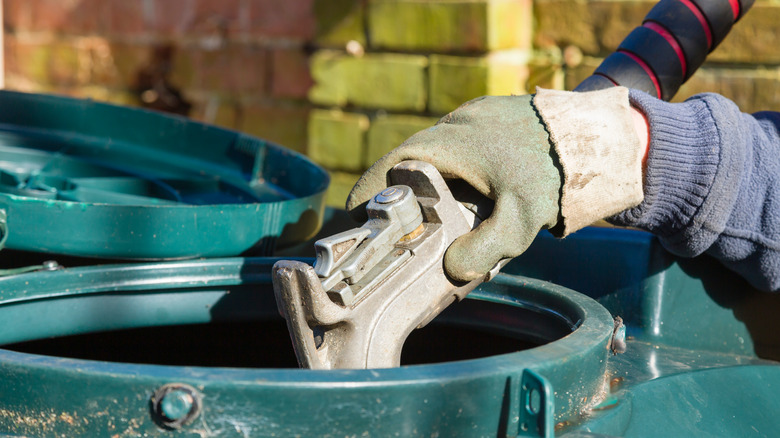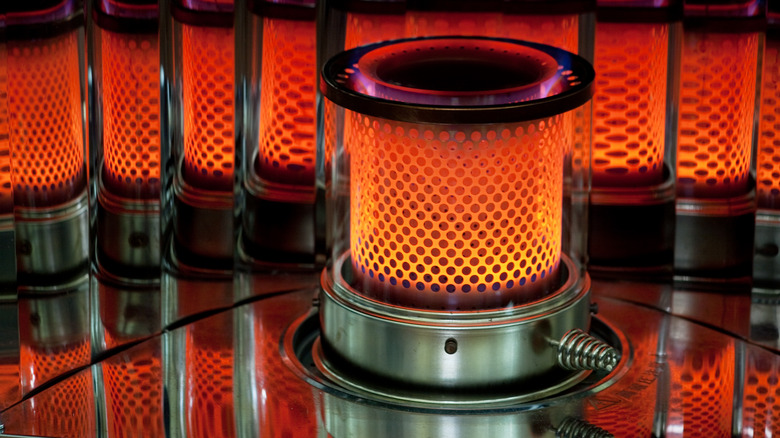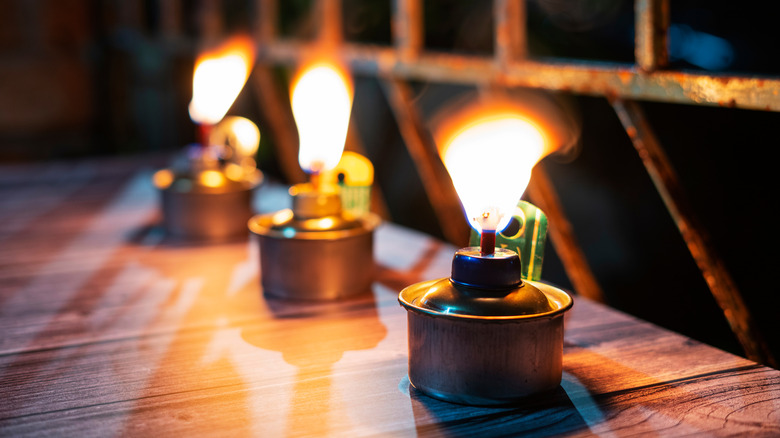The Right Way To Dispose Of Kerosene
Kerosene is a hydrocarbon liquid that is extracted mainly from petroleum. It is commonly used in heaters, lamps, and engines. The rise of gas and electricity has reduced the presence of kerosene in the home, but it's still used today. Kerosene is inexpensive, simple to use, and, according to Rix, it's considered one of the more sustainable fuel options. Also, kerosene can be used for short periods of time since it burns hotter and creates warmth faster.
Still, it is very hazardous and harmful to the environment to dump kerosene out in the open because it's flammable and contributes to greenhouse gas emissions. Exposure to kerosene can also cause various kinds of inner and outer damage to the body, which is why it's important to know how to properly dispose of it.
Has your kerosene started to smell stronger or sour, changed color, or stopped burning as well as it used to? Project Perfect Home lists these as signs that it's no longer fit for use. Unfortunately, it's unsafe to pour spent kerosene down the drain or to bury it in the ground. Whether your kerosene is old or you simply have no use for it anymore, read on for the best disposal methods.
Drop it off at a waste facility
Waste facilities collect all kinds of hazardous materials to either treat, store, or dispose of. These can include batteries, pesticides, bleach, other types of harmful chemicals, and even the containers that hold them. Find a facility that collects waste in your area and ask if they take kerosene. This is the easiest method of disposal because all you need to do is drop it off at the location and they will take care of the rest. Home Steady says it's common for these facilities to only accept pure kerosene, so try not to mix it with anything else.
Gas stations and automobile repair shops are other places that might accept kerosene because they often use it to flush engines or as a lubricant. Heatwhiz mentions that gas stations are more likely to take kerosene that hasn't been used yet. And if all else fails, they recommend asking your local fire department to point you in the right direction.
Check in with your community
Your local government might put on events for community waste collection, so check out your city's website to see if you can take your kerosene there. For example, according to the City of Portland, OR, there are neighborhood collection events every week for many months at a time. These community events are free to attend and there are set locations where you can drop off hazardous materials for free. If you can't find event dates online, get in touch with your local Department of Public Works. Some regions even do pickups from your house, collecting all sorts of things like old paint, electronics, cleaners, etc.
Per Heatwiz, one more thing to try is contacting your neighbors, businesses, charities, and other local bodies near you to see if they need some kerosene. While you might not get a lot of money for it, it's good that it's going where it will be used because it's better to use kerosene than to have to dispose of it.
Leave it out to evaporate
This is a last resort and is usually used with only a little bit of kerosene. Never try this with more than a liter so you don't risk poisoning the air. If you have more than a little bit, Project Perfect Home recommends leaving small amounts out in the sun in a closed metal container so it can evaporate. Don't have a cover for the container? Earth911 suggests using something that will only allow air to get in, like a grate. Make sure to place the container in a well-ventilated area away from where people and animals could accidentally touch or spill it.
The kerosene will evaporate very slowly, so be mindful that this method will take a long time. When all the liquid has evaporated, wrap the empty container in plastic multiple times and throw it in the trash. This is a simple method that doesn't require you to leave your home.



